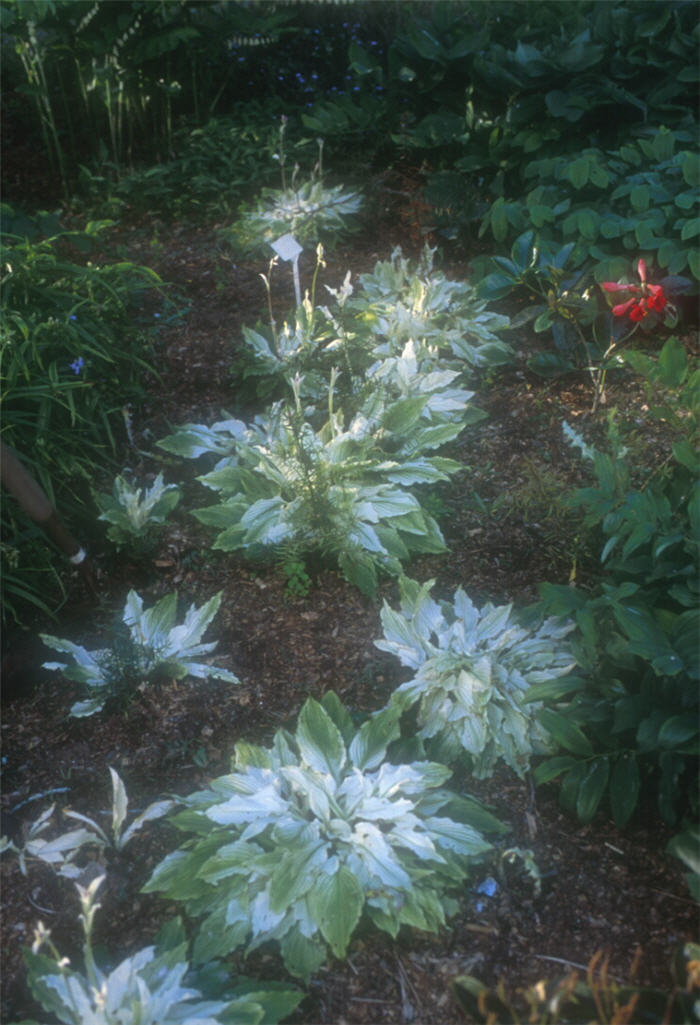| Botanical Name: Hosta 'Mostly Ghostly' | |
| Common Name: Mostly Ghosty Hosta |

-
Anatomy
-
Culture
-
Design
Plant Type
Ground cover, Perennial
Height Range
1-3'
Flower Color
White
Flower Season
Summer
Leaf Color
Green, Yellow Green, White, Yellow, Variegated
Bark Color
n/a
Fruit Color
n/a
Fruit Season
n/a
Sun
Shade
Water
Medium, Extra in Summer
Growth Rate
Moderate, Slow
Soil Type
Loam
Soil Condition
Average, Rich, Well-drained, Moist
Soil pH
Neutral
Adverse Factors
n/a
Design Styles
English Cottage, Formal, Japanese, Woodland
Accenting Features
Unusual Foliage
Seasonal Interest
Spring, Summer
Location Uses
Perennial Border, Patio
Special Uses
Small Spaces
Attracts Wildlife
n/a
Information by: Stephanie Duer
Photographer: Bobbie Schwartz
Photographer: Bobbie Schwartz
-
Description
-
Notes
'Mostly Ghostly' is a medium hosta which comes out of the ground white and eventually develops some flecks of green which multiply steadily until it appears somewhat "normal" by midsummer. This hosts needs mostly shade, or the white foliage will burn.
Grow in well drained soil in part shade to full shade to dappled light. Some varieties are listed as being suitable for full sun, but in our hot, dry climate, they all benefit from some mid-day sun protection. Ideally, provide a loamy soil, amended with organic material. Remove spent flower scapes after blooming to encourage more flowering and for a tidy appearance. In early spring, remove spent foliage, taking care to watch for new foliage emerging from the crown. Though not thought of as a "water-wise" plant, Hostas do remarkably well in dry part-shade to full-shade conditions, and are frequently the victim of over-watering, succumbing to crown or root rot.